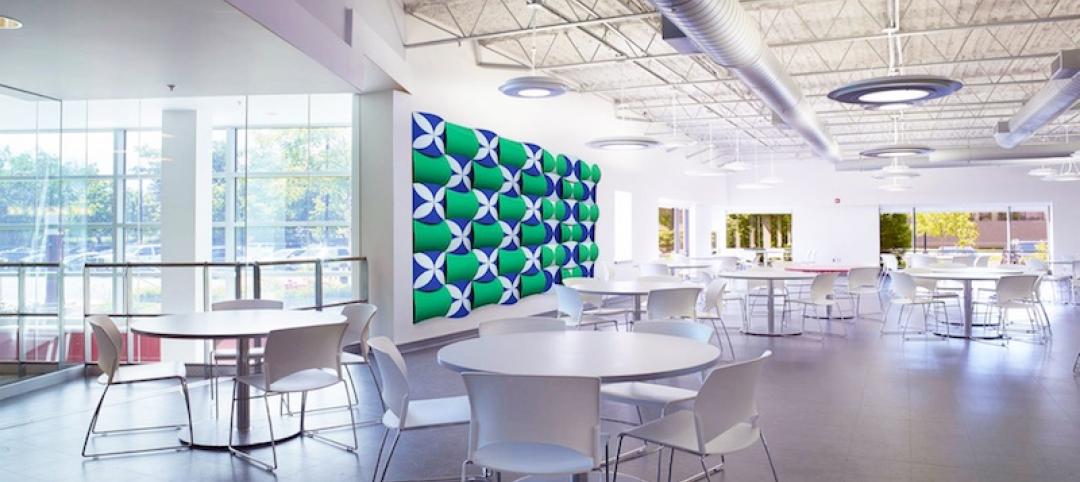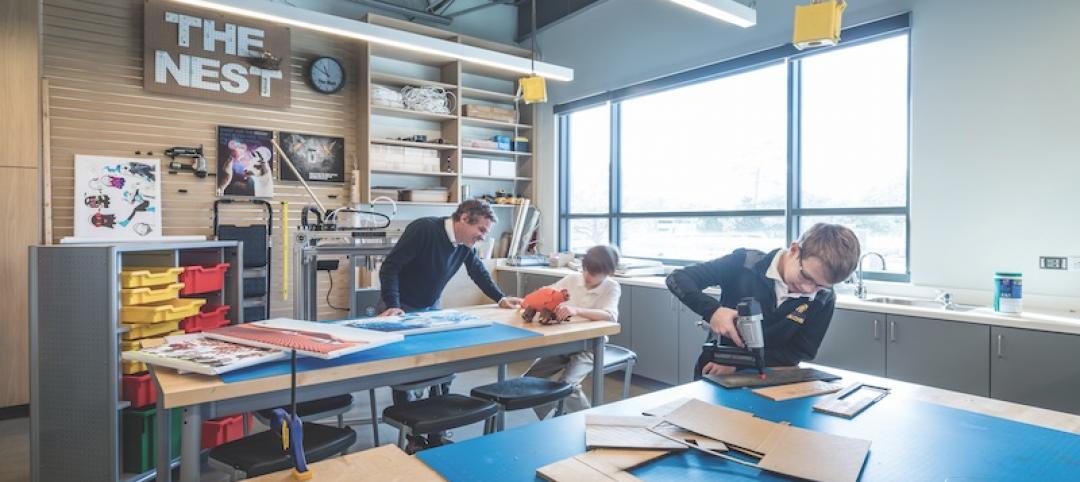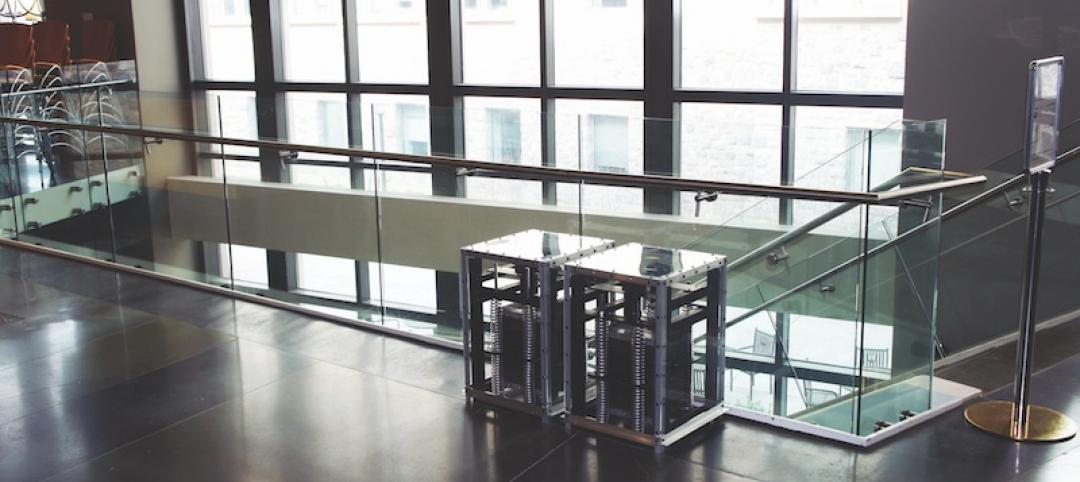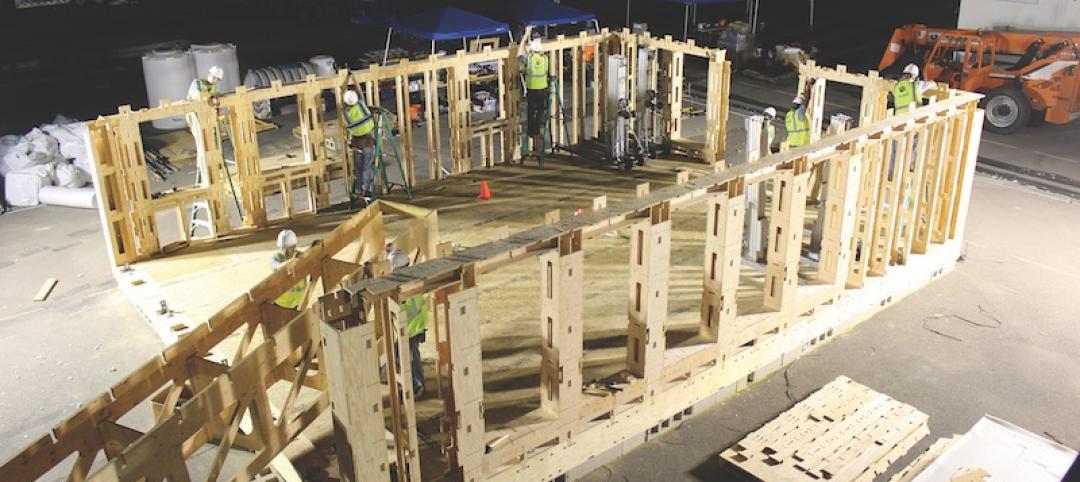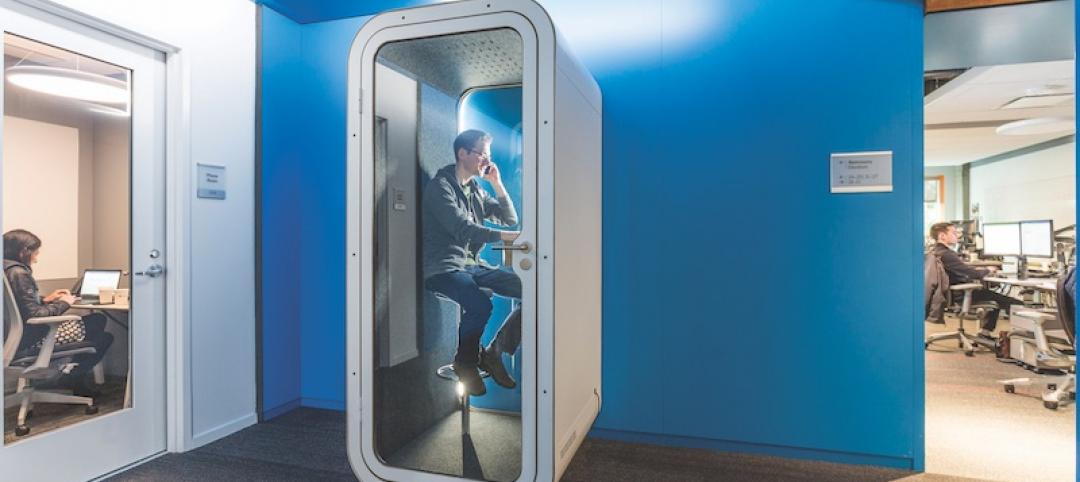In a medical emergency, the faster a patient receives attention, the better their prognosis becomes. Natural disasters such as hurricanes and floods can make transferring a patient to a hospital difficult. What if the hospital could come to the patient?
That question spurred the creation of the Medical Motherboard (MM), a modular, scalable mobile hospital that can adapt to multiple crises at any scale. Designed by CallisonRTKL, the MM combines artificial intelligence, advanced medical equipment, electric vehicle technology, and drones into one life-saving package.
See Also: Public canopy system can be reconfigured by drones on the fly
MM is built on a platform that acts as the backbone of the system. Based on electric vehicle technology and automobile platform concepts, the platform houses the power bank, telecommunications equipment, computer systems, and support infrastructure that allow the modules to plug and play on its surface. A spine rises from the platform and contains water filtration and docking stations for minor modules.
 Courtesy CallisonRTKL.
Courtesy CallisonRTKL.
Minor modules act as the support services to the major modules (more on those later). They consist of services like registration and triage kiosks; water collection, purification, and storage; power supply; supply storage; equipment storage; and a drone-assisted resupply station. The registration and triage modules are equipped with AI that asks victims questions and helps first responders interview and classify them in terms of urgency. AI can then call for help or direct victims to the appropriate major module for further care. The major modules are medical care facilities like exam rooms, imaging suites, and operation rooms. The combined module space for each MM is 8x24 feet; side extensions can be attached.
The modules can be mixed and matched to best suit the situation. Once the appropriate modules are selected, they are moved onto the platform and locked into place. The onboard MM computer will then identify, catalogue, and connect the modules into a single network.
The MM is then towed on site like a technology packed camper trailer. Hydraulic stabilizer legs and a folding solar roof panel deploy to complete the set up. A rooftop air purifier system begins to ventilate the major modules.
In the event of a large-scale disaster, groups of MMs can be deployed together with complementary modules to create an entire mobile hospital.
Related Stories
Great Solutions | Mar 9, 2018
Forget the wall thermostat: Wear one on your wrist instead
The Embr Wave Wristband acts like a personal thermostat and could become a user-friendly component in building energy-saving strategies.
Great Solutions | Feb 8, 2018
Stackable steel modules speed building core construction
With this patented, steel-and-concrete hybrid system, the service core will no longer be the schedule bottleneck on new construction projects.
Great Solutions | Jan 10, 2018
Blue lagoon technology brings the beach anywhere in the world
From coastal resorts to inner cities, these large-scale clear-water lagoons offer a slice of paradise.
Great Solutions | Oct 17, 2017
Loop NYC would reclaim 24 miles of park space from Manhattan’s street grid
A new proposal leverages driverless cars to free up almost all of Manhattan’s Park Avenue and Broadway for pedestrian paths.
Great Solutions | Sep 14, 2017
Hydraulic underground boardwalk and gangway system reunites the public with the coastline in Istanbul
The bespoke system is part of a master plan by Dror and Gensler that creates the world’s first underground cruise operation.
Great Solutions | Aug 14, 2017
Transmogrifying ‘E ink,’ energy-harvesting paint remove the ‘fiction’ from ‘science fiction’
These materials can turn an ordinary wall into dynamic real estate.
Great Solutions | Jul 12, 2017
The writing on the wall: Maker spaces encourage students to take an active role
Maker spaces, dry-erase walls, and flexible furniture highlight Kinkaid’s new Learning Center.
Great Solutions | Jun 6, 2017
Good vibrations: Portable tuned mass damper provides lightweight, cost-effective way to reduce structural vibrations
Developed by a team at Virginia Tech, the PTMD has been shown to reduce vibrations by as much as 75%.
Great Solutions | May 5, 2017
No nails necessary: Framing system comes together with steel zip ties and screws
Clemson University’s School of Architecture develops a patent-pending construction method that is gaining attention for its potential use in rapid, low-tech sustainable housing.
Great Solutions | Apr 6, 2017
Phone booths for the 21st century
Spotting a phone booth on a public street may not become any less rare, but they may soon become fixtures in the modern office.








